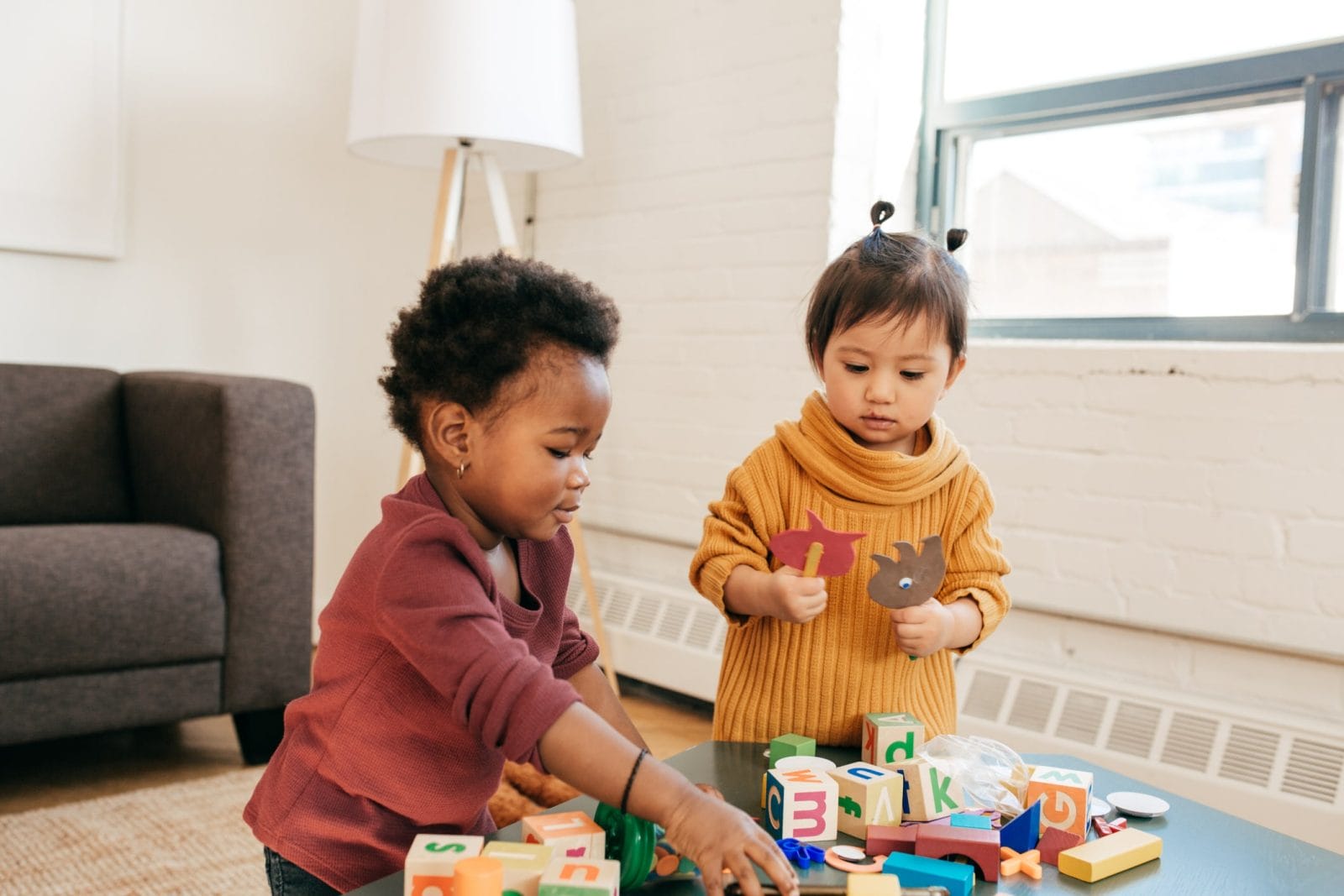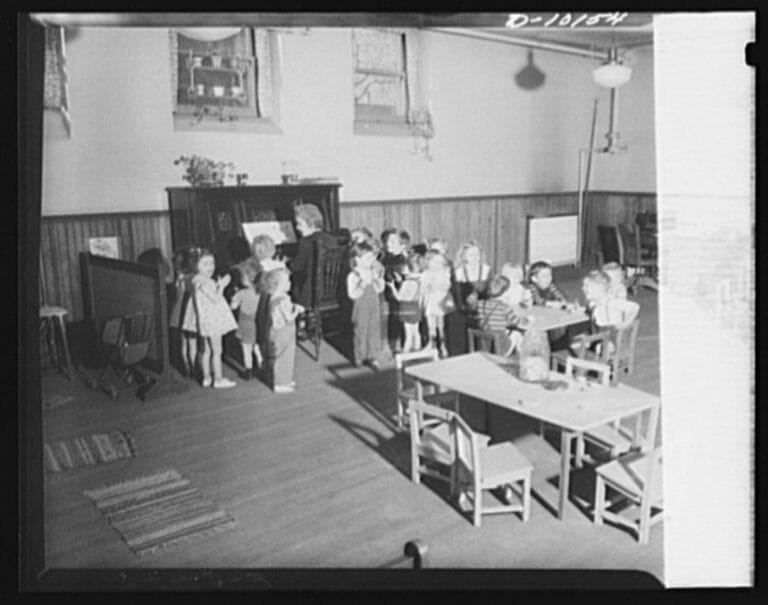Top questions to ask yourself + the provider when considering childcare

6. How is learning structured and what educational programs do you follow?
Table of Contents
- After helping thousands of parents find care, we compiled a list of questions to share with you to ensure that you find the best daycare environment for your child:
- 1. Is this childcare option convenient for my family and our schedules?
- 2. Is the childcare affordable long-term?
- 3. Do I feel that my child will be in a safe environment?
- 4. What is the policy for extended care or late pick-up?
- 5. What is your holiday schedule?
- 6. How is learning structured and what educational programs do you follow?
- 7. What is the teacher to child ratio?
- 8. What is the teacher turnover?
- 9. How do you communicate the child's developmental progress? And, how often?
- 10. Do the children play outdoors?
- 11. What is the discipline policy?
- 12. How is conflict resolution handled between children?
When I was pregnant with my first child, I was not prepared for how expensive childcare was or how difficult it would be to find an available spot for my child. Finding high-quality and affordable childcare is a challenge that most families will face. Working families across the country pay a high percentage of their annual income to cover the price of childcare. And today, about 57% of women work outside of the home.
After my personal struggle in finding childcare and after touring more than 50 daycares, I was determined to transform the childcare industry and find a solution for other mothers looking for a safe, affordable, nurturing, education-based childcare solution for their child. With that mission in mind, I founded WeeCare.
After helping thousands of parents find care, we compiled a list of questions to share with you to ensure that you find the best daycare environment for your child:
1. Is this childcare option convenient for my family and our schedules?
Communicate your work schedules with your childcare provider and have a plan in place with your family ahead of time. Who will be dropping off and picking up your child? Once you decide on who will do the regular pick-ups, make sure you have a back-up option who is more than just an emergency contact. This will help ensure a smoother transition for your family and your child.
2. Is the childcare affordable long-term?
Ensure the option you choose is sustainable for your family over time. Picking an option that is a little over budget and switching later can add additional financial stress and disrupt your child’s ability to form a bond with their caregiver. Also, ask about additional fees that you may need to budget for such as diaper changing, keeping the child for additional hours or transportation.
3. Do I feel that my child will be in a safe environment?
4. What is the policy for extended care or late pick-up?
Emergencies can happen so it’s best to understand the provider’s policies upfront and that they align with the needs of your work schedule. A few questions to keep in mind:
- How much advance notice do you need to give if you won’t be needing childcare on certain days to avoid being charged?
- What is the policy on communicating that you will need to stay at work late?
- How many times a day does the provider communicate with parents and what is the best method to communicate with them?
- How long does it typically take them to respond to parents?
5. What is your holiday schedule?
Childcare providers are usually closed during major holidays. They may also be closed for in-service training or longer holidays such as summer or winter break. This can range from a couple of days to a few weeks so get that information in advance so you can plan ahead if childcare is not available.
6. How is learning structured and what educational programs do you follow?
Did you know that 90% of physical brain development occurs in the first three years of life, and research shows a direct relationship between the quality of childcare and cognitive and language development. As children under the age of 5 spend an average of 36 hours per week in a childcare setting, a structured early-education environment with a routine is vital to their success later in life. There should be a day-to-day routine to ensure the child is learning.
Ask what teaching method they follow—iMontessori, Reggio Emilia, Waldorf, etc. It’s also important to ask if the teachers have a background in early education, as this can positively impact your little one.
7. What is the teacher to child ratio?
The teacher-to-child ratio speaks to both the safety and the amount of one-on-one attention a child will receive in an environment. Many daycare centers will increase the number of children to grow their margins and not the number of caregivers, the result is often overcrowded classroom.
While it varies, the number of teacher to children ratio mandated by the state is usually around a maximum of 1:15. Where in a home daycare environment, the teacher to student ratio is usually 1:6. Here you can find out more about childcare in your state, including the teacher to child ratio.
8. What is the teacher turnover?
Teacher turnover is another factor that can disrupt your child’s ability to form a bond with their caregiver during a key stage of their development. It has been shown that children enrolled in early education programs with low turnover and higher staff compensation witness and experience more positive interactions that are crucial to their healthy development.
Positive adult relationships and positive learning environments has also shown to boost a child’s success in later learning and in life so this relationship is vital to your child’s development. Ask how long the teachers have been there, and observe how happy the teachers look overall and with their environment.
9. How do you communicate the child’s developmental progress? And, how often?
This is definitely a question that you will want to ask, as well as how often and what method your child’s developmental progress will be communicated (in-person, email, text, etc). This will help align you with the caregiver on the expectations of how often you hear from them. If you have a concern that you have brought up over email that is not being addressed, this would be a sign that the daycare provider is not communicating properly. You may need to take the conversation offline and schedule a time to meet in-person to discuss this further.
10. Do the children play outdoors?
Outdoor play is just as critical as indoor play and allows children to develop stronger social and emotional skills. Kids need to be in a natural environment where they can run, explore and exercise. Ask about how much time is spent outdoors each day and what activities they engage in when outside.
11. What is the discipline policy?
Having a caregiver with a discipline policy that is aligned with what you are teaching at home ensures consistency in what your little one knows as positive or negative behavior. It goes without saying but you want to ensure the caregiver is not physically punishing children and the as a rule of thumb, the number of minutes spent in time-out should never exceed your child’s age.
12. How is conflict resolution handled between children?
Your child will need to learn how to properly interact with others and the teacher should give verbal cues and positive reinforcement when children resolve an issue. If the teacher does not, this could be a red flag. Ask what happens if the conflict occurs again and at what point are the parents involved. What is the difference between “normal” conflict between two children and when parents should be worried?


































